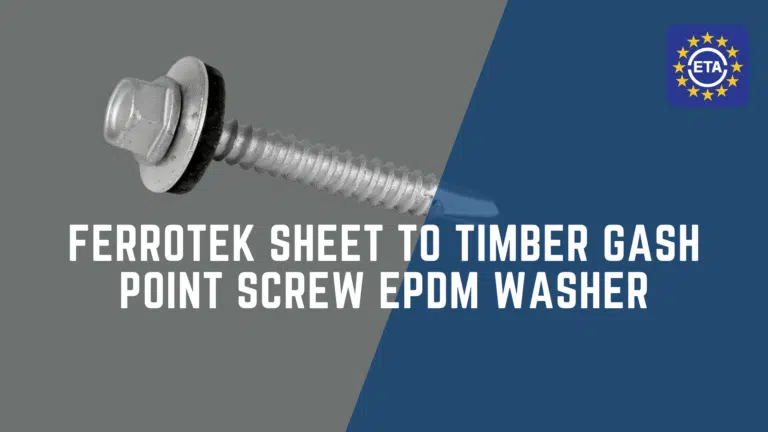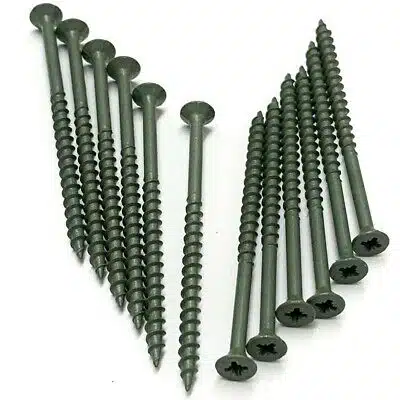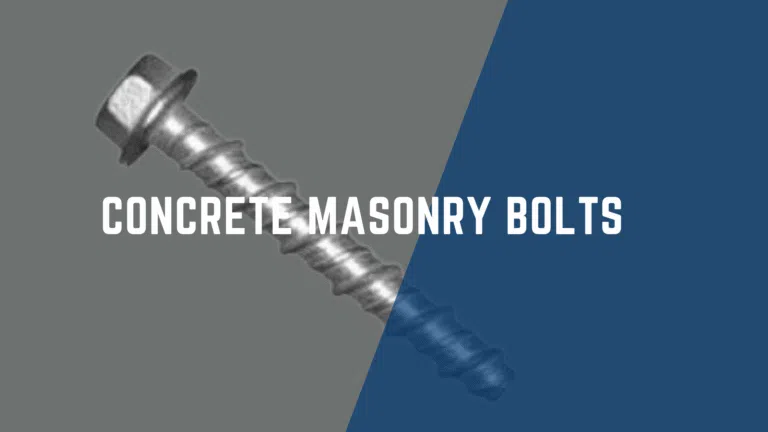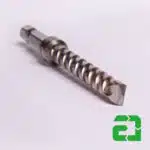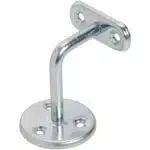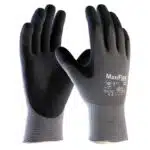Quality construction requires attention to detail and the correct use of materials, especially when working with concrete masonry bolts. In this post, you will discover seven crucial tips to enhance the integrity of your builds, even when using unverified bolts. By following these tips, you can ensure a stronger bond while navigating the potential pitfalls of non-certified options. Equip yourself with the right knowledge to foster durability and safety in your masonry projects.
Key Takeaways:
- Selection of high-quality materials is crucial for ensuring longevity and durability in construction projects.
- Proper installation techniques significantly enhance the effectiveness of concrete masonry bolts, impacting overall structural integrity.
- Regular inspections and maintenance can prevent issues and extend the lifespan of builds employing concrete masonry bolts.
 The Unsung Importance of Non-Certified Concrete Masonry Bolts
The Unsung Importance of Non-Certified Concrete Masonry Bolts
Non-certified concrete masonry bolts may not have the backing of formal certifications, but they hold significant value in various construction scenarios. Many builders turn to these bolts due to their cost-effectiveness and availability. While not officially recognised, they can still provide reliable performance within appropriate applications, especially in projects with less stringent requirements. Understanding their role can enhance your project’s quality when used judiciously.
Understanding the Role of Non-Certified Bolts in Construction
Non-certified bolts play a versatile role in construction, often utilised for temporary structures or less critical applications. They are favoured for their adaptability, allowing you to experiment with different fastening techniques without the financial burden of certified products. This flexibility can help you optimise your build processes, particularly in non-load-bearing scenarios where stringent safety regulations are not paramount.
Addressing Common Misconceptions Surrounding Certification
Many misconceptions exist regarding the necessity of certification for concrete masonry bolts. Some assume that a lack of certification directly equates to inferior quality, but this isn’t always the case. The *regulatory landscape* around certification varies widely, and many effective products do not undergo stringent testing yet still perform well for their intended applications.
Addressing these misconceptions further reveals that many non-certified bolts meet the practical needs of numerous projects without posing safety risks. For instance, a local builder may use non-certified bolts in a temporary framework, where the standards are less rigid. The perceived gap in quality can stem from an overestimation of certification’s role, overshadowing the reality that effective engineering principles and proper installation techniques are often more significant determinants of performance.
Secrets to Choosing the Right Non-Certified Bolts
Understanding the nuances of non-certified bolts can elevate your construction projects significantly. Selecting the right option involves considering various factors such as material composition, dimensions, and the specific demands of your application. By focusing on these elements, you can ensure that your choice not only meets the requirements of your build but also enhances durability and performance.
Material Matters: Selecting the Best Composition
The composition of your bolts directly influences their strength and resistance to environmental factors. Opting for high-quality steel, for instance, can offer superior tensile strength and corrosion resistance. Stainless steel bolts, while slightly more expensive, provide excellent durability against rust, especially in outdoor settings. For concrete applications, zinc-plated bolts can serve well, but ensure the plating is thick enough to withstand moisture exposure.
 Size is Key: How Dimensions Impact Performance
Size is Key: How Dimensions Impact Performance
The dimensions of your bolts—length, diameter, and thread pitch—play a pivotal role in their effectiveness. Bolts that are too short may not provide adequate grip, while those that are oversize can lead to cracking within the concrete. A common guideline is to choose a bolt whose length extends at least 1.5 times the diameter of the object being fastened, ensuring strong anchorage without risking damage.
Finding the right size involves evaluating the specific requirements of your project. For instance, when securing heavy materials, a larger diameter bolt can distribute load more evenly across surfaces, reducing the likelihood of failure. Additionally, the thread pitch is vital for ensuring proper engagement; fine threads can offer superior locking power, making them ideal for vibrating environments. Consideration of these dimensions can lead to a more stable and secure construction, ultimately enhancing the lifespan of your build.
Installation Techniques for Maximum Durability
Total attention to detail during installation is vital for achieving maximum durability with concrete masonry bolts. Start by ensuring a clean working environment to prevent contaminants from interfering with the bonding process. Utilising appropriate installation tools and techniques will aid in securing the bolts effectively, contributing to long-lasting performance.
Proper Drilling and Placement for Optimal Strength
Achieving optimal strength starts with precise drilling and correct placement of bolts. Use a high-quality rotary hammer for drilling, ensuring that the diameter matches the bolt specifications. Positioning bolts at recommended depths and angles can significantly enhance the connection between the masonry and the bolt, ultimately increasing the load-bearing capacity.
Applying the Right Torque: Avoiding Over-tightening
The torque applied during installation significantly affects the performance of masonry bolts. Over-tightening can lead to material failure, while under-tightening may result in inadequate grip. Using a torque wrench to follow manufacturer guidelines will ensure that you achieve the ideal balance for your concrete applications.
Employing a torque wrench with incremental settings assists in applying the correct force consistently, tailored to the specific requirements of your project. For example, a standard torque for many masonry bolts typically ranges from 20 to 30 Nm, depending on the size and material. If you apply too much force, you risk stripping threads or cracking the masonry, while too little torque compromises the bolt’s effectiveness. Aim for precision and check torque levels frequently during the process to ensure robust and secure installations.
Maintenance and Inspection Practices to Enhance Longevity
Maintaining and inspecting your concrete masonry bolts significantly contributes to their longevity. A regular inspection schedule allows you to spot potential issues before they escalate, ensuring your building remains robust. Take the time to clean any debris and examine for signs of wear and tear, helping to uphold the structural integrity of your projects. Additionally, maintaining a log of inspections can aid in tracking the performance of your bolts over time, facilitating better decision-making regarding replacements or repairs.
 Regular Checks: Identifying Wear and Tear
Regular Checks: Identifying Wear and Tear
Perform periodic examinations to identify wear and tear on your concrete masonry bolts. Look for rust, corrosion, or deformation, as these factors can indicate that the bolts are reaching the end of their lifespan. A close inspection can reveal minor issues before they become significant, helping you maintain a high quality in your builds. Pay attention to any cracks or surface changes that could compromise their performance.
When to Replace: Signs Your Bolts Need Attention
Several indicators suggest your bolts may require replacement. These include excessive rust, misalignment, or any visible damage like cracks or bending. If you notice your bolts are loosening despite proper tightening, that could signal fatigue or failure risks. As a guideline, replacing bolts every few years or after significant wear ensures optimal structural integrity and safety for your construction projects.
Specific signs like rust patches or significant thread wear can often mean that bolts have reached a point where they can no longer provide the necessary support. Look out for any bulging or uneven surfaces, as these often lead to failures under pressure. Regular monitoring and timely replacements not only extend the life of your construction but also ensure safety and reliability in your overall project. Visual cues like these should never be overlooked, as they can save you from more extensive and costly repairs down the line.
Navigating Local Regulations and Safety Standards
Understanding local regulations and safety standards ensures your construction projects comply with necessary legal requirements and prioritise the safety of all involved. Building codes dictate the types of materials and methods you can use, significantly affecting how you approach your builds. Adhering to these regulations not only keeps your project on track but also protects your reputation as a builder.
Understanding Compliance Requirements in Your Area
Every region has specific compliance requirements that dictate how construction projects should be executed. These regulations often include specifications for materials, structural integrity, and safety protocols. By familiarising yourself with local codes, particularly concerning concrete masonry bolts, you can avoid costly penalties or project delays. You may also want to consult with local building authorities for the most recent updates to these standards.
The Impact of Non-Certification on Liability and Liability Insurance
Using non-certified masonry bolts can have significant implications for your liability and insurance coverage. If a structural failure occurs, the absence of certification can lead to increased liability risks and complications in filing any related insurance claims. Insurers may question the safety and integrity of your work, potentially leading to higher premiums or denied claims.
The ramifications of using non-certified materials extend beyond immediate safety concerns; they can profoundly affect your liability management. Should a claim arise from a structural failure involving non-certified masonry bolts, your insurance provider may scrutinise your practices closely. In many cases, they could argue that you failed to adhere to industry standards, which provides grounds for denying coverage. It’s advisable to engage with your insurance agent to discuss the specific implications of using non-certified products, allowing you to make informed decisions that protect both your business and your clients.
Summing up
The tips provided for using 7 concrete masonry bolts not certified will significantly enhance the quality of your builds. By ensuring proper selection, installation, and maintenance of these bolts, you can improve the durability and reliability of your structures. Always consider the specific requirements of your project, and don’t hesitate to seek expert advice when needed. With this knowledge, you are better equipped to make informed decisions that ensure the integrity of your masonry work.
FAQ
Q: What are 7 Concrete Masonry Bolts, and why are they not certified?
A: 7 Concrete Masonry Bolts refer to a specific type of bolt designed for anchoring items into concrete structures. The term ‘not certified’ indicates that these bolts have not undergone formal testing or approval by recognised standards or organisations. While they may be suitable for various applications, using unverified products requires careful consideration of safety and structural integrity.
Q: What factors should I consider when selecting concrete masonry bolts for a construction project?
A: When choosing concrete masonry bolts, consider the load requirements, the type of materials being anchored, and the existing conditions of the concrete. Additionally, evaluate the environmental factors such as exposure to moisture or chemicals, as these can affect the longevity and performance of the bolts. Furthermore, if the bolts are not certified, assess any potential implications for safety and durability.
Q: How can I ensure the quality of my build when using non-certified concrete masonry bolts?
A: To ensure quality despite using non-certified concrete masonry bolts, conduct thorough research on the manufacturer and product specifications. Perform tests on the concrete to verify its strength and condition. Additionally, utilise best practices for installation, such as pre-drilling holes to the correct size and torqueing the bolts to appropriate specifications to achieve optimal performance.
Q: Are there specific installation techniques to follow for concrete masonry bolts to maximise their effectiveness?
A: Yes, there are several installation techniques that can enhance the effectiveness of concrete masonry bolts. Start by drilling holes appropriate to the bolt size and ensuring they are free from dust and debris. Insert the bolts and tighten them to the specified torque using a torque wrench. Additionally, if applicable, consider using a concrete adhesive to enhance the bond and stability of the installation.
Q: What are potential risks associated with using non-certified concrete masonry bolts in a construction project?
A: Potential risks of using non-certified concrete masonry bolts include inadequate load capacity, which could lead to failure during use. There’s also a possibility of corrosion or degradation over time, affecting the overall integrity of the structure. Moreover, if these bolts fail, they could result in injury or damage, placing responsibility on the installer. Thus, careful consideration and proper installation techniques are imperative to mitigate these risks.
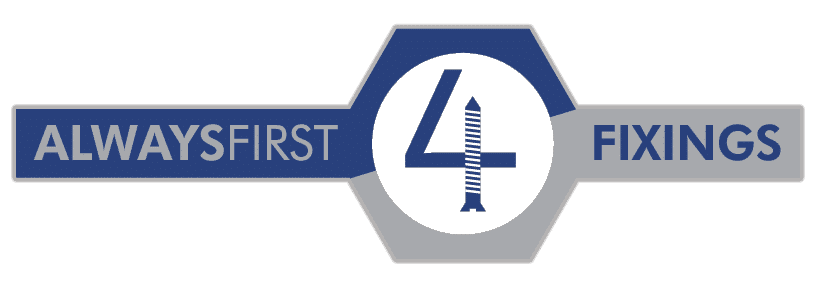
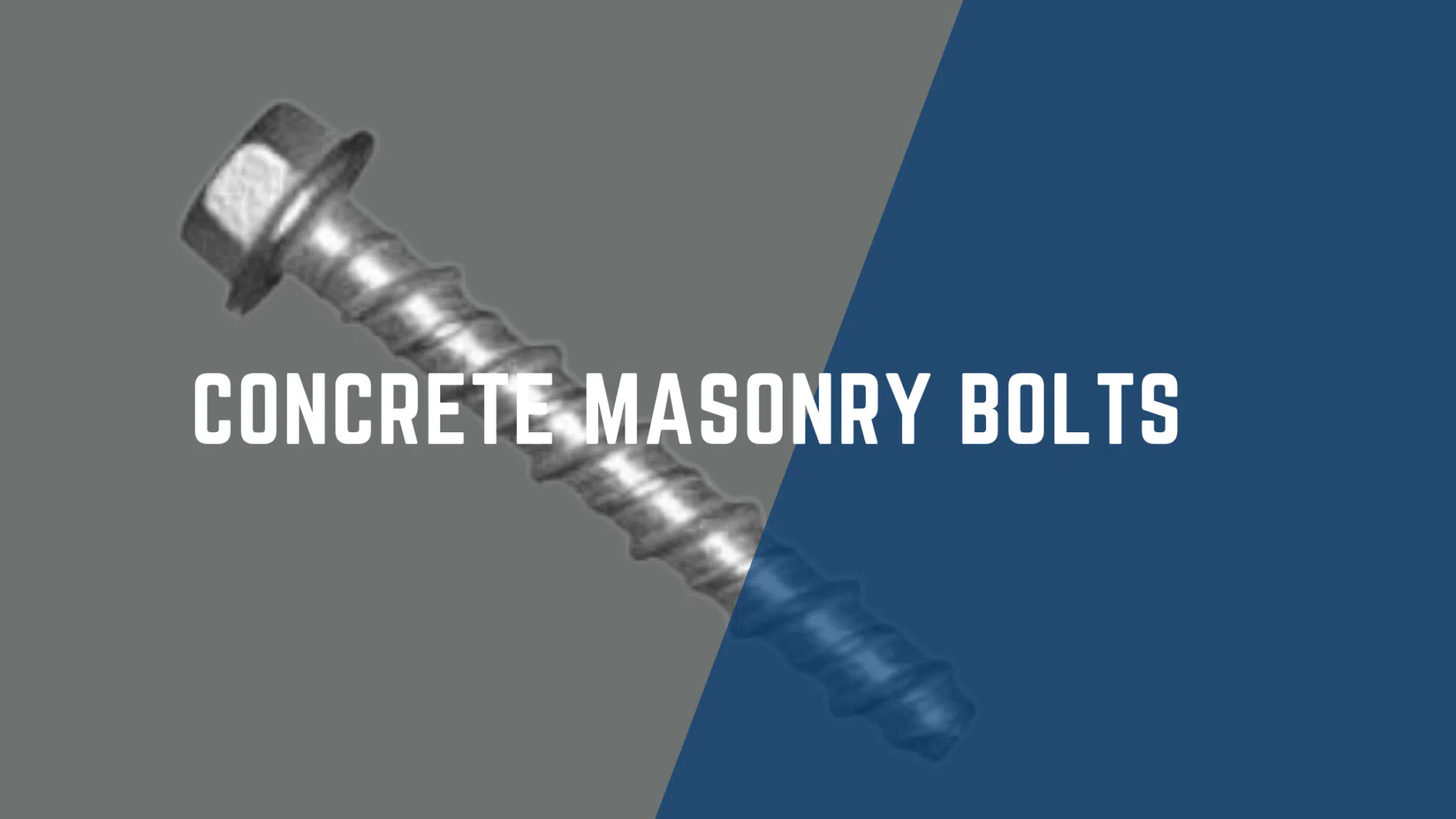
 The Unsung Importance of Non-Certified Concrete Masonry Bolts
The Unsung Importance of Non-Certified Concrete Masonry Bolts Size is Key: How Dimensions Impact Performance
Size is Key: How Dimensions Impact Performance Regular Checks: Identifying Wear and Tear
Regular Checks: Identifying Wear and Tear